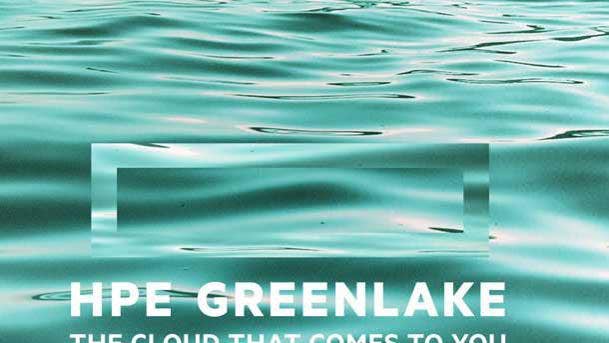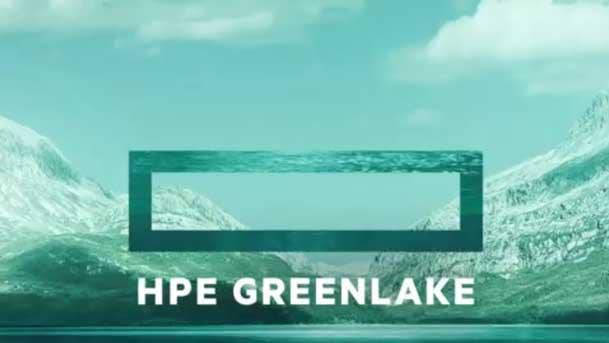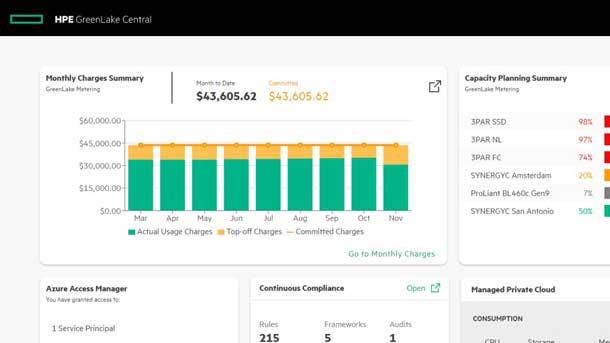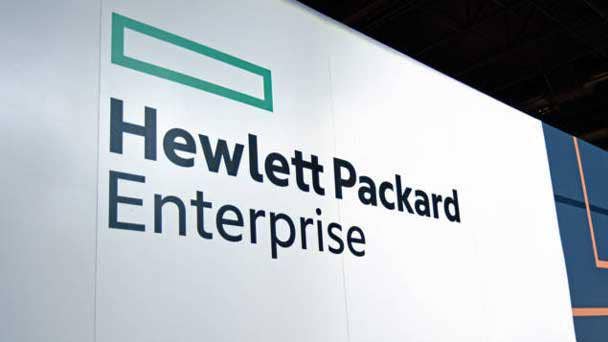Public Sector Customers Can’t Afford To Put ‘Everything Into A Public Cloud’: HPE Vice President Susan Shapero
HPE Public Sector Vice President Susan Shapero says government customers cannot afford to move all of their data into the public cloud.

Public Sector Customers Are Pushing Back On Public Cloud
Hewlett Packard Enterprise Public Sector Vice President Susan Shapero says public sector customers are pushing back on the high cost of public cloud in favor of hybrid cloud solutions like HPE’s GreenLake pay-per-use on-premises cloud platform.
“I don’t think that our customers can afford to put everything in a public cloud,” said Shapero in an interview with CRN. “So they are very much looking at kind of a hybrid model and looking for solutions like we have with GreenLake.”
Shapero, a seasoned 20-year public sector sales veteran who took the top HPE public sector job just three months ago, says security concerns are a big issue in the public sector.
“Some of our very special public sector customers do not feel comfortable letting their crown jewels leave their premises,” said Shapero. “So having the opportunity to move to a cloud-like experience (with GreenLake) that gives them the ability to flex up and flex down but stay within their guns, guards and gates is particularly compelling.”
HPE’s public sector business is seeing a “huge” GreenLake sales pipeline, said Shapero.
“With our public sector customers who have very formal acquisition processes, solutions like GreenLake really help enable their transformation and allow them to refresh their infrastructure in a much easier procurement fashion,” Shapero said. “I think it is really going to help enable them to meet some of their critical goals.”

What changes have you made since you took the job in March?
The first thing I needed to do was to make sure that I had the best-in-class leadership team in place to go after and tackle this business. So I leveraged this outstanding group that I had and made a few tweaks to make sure that we had rock stars in place in order to go after and build the business. That was job number one.
No huge changes in our go to market strategy. We are very focused on driving profitable growth. HPE Public Sector has always had a partner first strategy. We think that really the best go to market strategy is really working with our partners in order to drive profitable growth.

What is your vision for HPE Public Sector?
I want within public sector for HPE to be the company that they go to in order to tackle their most challenging IT problems. For me what that means is we have to have innovation baked into everything that we do. To me it is beautiful that (HPE CEO) Antonio (Neri) comes from an engineering background and understands the critical importance of innovation. Innovation can be gotten many different ways.
We have an extremely robust HPE Labs organization and very strong partnerships between HPE Labs and our public sector customers where we jointly identify areas we can develop and grow the technology in order to be more relevant to our customers as well as acquiring companies that we feel are important for us to be able to drive that kind of innovation.
Just recently HPE has been acquiring many cloud native companies in order to really drive some of the innovation that is required there as well. Innovation happens in many different ways within the company but it is absolutely critical to our success.

What is the go-to-market plan in terms of GreenLake?
I would say that GreenLake is probably one of the top priorities in our particular market. We find that within public sector there is a real interest in cloud enabled, cloud native. GreenLake really scratches a lot of itches for our customers who are trying to drive efficiencies and flexibility.
Absolutely GreenLake is critical to everything that we are doing. We have other differentiation also in the market. A couple of different areas are: our customers are very concerned about security. As you read in the newspapers cybersecurity is top of mind everywhere. So we have very differentiated solutions from a security perspective: secure supply chain and some of the zero trust that we are incorporating across our whole portfolio.
Another area that is of keen interest in public sector is high performance computing. We acquired both Cray as well as SGI and we have very differentiated solutions in that areas.

What kind of performance are you seeing in public sector?
If you listened recently to the earnings from (HPE CEO) Antonio (Neri) he would tell you that we grew the (overall HPE) business nine percent year over year which is pretty spectacular performance really across the board. I think public sector was a contributor to those good results.
Lots of wins in the area of high performance computing as well as we had some interesting GreenLake wins as well.
What’s the public sector pipeline like for GreenLake?
It is big. It is huge.
What is driving the GreenLake on-premise pay-per-use cloud service public sector pipeline?
A lot of things are driving it. Number one is customers really like the idea of efficiencies and flexibility. There are policies in place within public sector about having things cloud native. GreenLake addresses a lot of those issues that the public sector is trying to address. We are having success both with end user customers as well as our systems integrators.

An Andreesen Horowitz report recently highlighted that some companies are repatriating workloads back to on-premise cloud services. Are you seeing that in the government?
I certainly am. I am finding that at one time the strategy was all (public) cloud. What I am seeing (now) is the strategy is one where it is public cloud where it makes sense.
I don’t think that our customers can afford to put everything in a public cloud. So they are very much looking at kind of a hybrid model and looking for solutions like we have with GreenLake.
What is the appetite for public sector customers for GreenLake versus public cloud?
Number one security. Some of our very special public sector customers do not feel comfortable letting their crown jewels leave their premises. So having the opportunity to move to a cloud like experience that gives them the ability to flex up and flex down but stay within their guns, guards and gates is particularly compelling. I would say that is a critical piece.
Not every one of our customers is willing to rewrite all of their applications to move it over to a public cloud. So they like having a bit more control of the infrastructure they run where they can be cloud ready and enabled with a consumption model on-prem in addition to bursting into the public cloud.

The government has declared ransomware as the equivalent of terrorism. What is the HPE security story for public sector?
I don’t think the government has just started to become aware of the issue with cybersecurity threats- maybe because I have been hanging around the Department of Defense and the intelligence community for too many years. They have been worried about security for a long time. If you asked the Department of Defense they would say it is the new battlefield. They have stood up Cyber Command and many other entities in order to take a look at it.
We have been really engaged with them very much on the ground floor. My security CTO (Chief Technology Officer) partners very closely with me to understand what some of the threat vectors are so that we make sure that we bake security in every single thing we build. The Silicon Root of Trust was something that we started with our server technology and we really expanded that portfolio to have it go beyond just the platform itself. The new buzzword now is zero trust. We are incorporating that in every single one of the products that we build. We also are very focused on secure supply chain. We have a US manufacturing facility for customers that have unique requirements around that area and have put together many programs and strategies around making sure we are the most secure provider in the industry.
What zero trust measures are you taking across the product line?
Zero trust goes across every single one of our platforms. Aruba is definitely one of the platforms. It is interesting when you look at wireless technology in the public sector. As much as they look at the technology they look at the security that is baked in. Aruba definitely has zero trust baked into everything they do as well.

What are some of the conversations you are having with public sector around security?
If the gas lines across the country based on the most recent ransomware attack (of Colonial Pipeline) didn’t prove to folks that this is real then nothing will. That’s a little bit scary. It is absolutely real. It makes it a little bit more complicated because they are not just attacking government networks. They are attacking our critical infrastructure. It is both our government networks as well as our public networks and private networks.
What I am hearing a lot about is really the incredible need for public/private partnerships to be able to battle cyber-security threats. We are part of many different forums at extremely high levels within the government talking about that critical partnership between public – private sector in order to be able to battle cyber-threats. This is all about being able to share best practices and talk in candid scenarios about some of the things that we have seen happen to figure out how we can work together to battle this.

How do you feel about the HPE portfolio that you are putting in front of the public sector customers?
I’ve spent my career at HP/HPE. I’m a believer. I particularly love the strategy that Antonio has put together that focuses on the edge all the way to the data center. It is very data driven and cloud enabled. When I brief our customers on that strategy it is amazing how well it resonates.
The other thing I love is that Antonio’s purpose driven strategy really resonates with me and our public sector customers. We are very focused (at HPE) on advancing the way we live and work. It couldn’t be a better fit for me personally as well as our public sector customers.
As you get in front of customers and partners at HPE Discover what changes are you looking at for the second half of the year?
Partners are the core of everything that we do. As we drive profitable growth we are looking for our partners to be with us hand in hand. We really believe that our partners help expand our touch, create more localized experiences for our customers. They help us create differentiated solutions because they are able to bring in different technologies to provide a total solution to our customers. They are able to help us be completely responsive to our customers by doing some integration work for us as well. Partners! Partners! Partners!

How critical is high performance computing to the public sector market?
It’s all about the data. If you talk to our customers and ask them what is top of mind for them it is how do they acquire, process and deal with the ubiquitous data that we have in the market.
We need to make sure that we bring our workloads to the edge because the data is no longer just hanging out in the data centers. So some of the critical investments that we are making at the edge in order to be able to collect and process data right where it is generated is absolutely critical.
Also driving insights through things like artificial intelligence and machine learning. Having the kind of foundation we have with high performance computing puts us in a beautiful position to help our customers do some of the data analysis and create the kind of insights that are critical for keeping our nation safe, providing services to our constituents and really helping enable education for our kids. It is all about the data.
Are we at an inflection point where public sector can get modern technology without a massive multimillion dollar capital expenditure?
With our public sector customers who have very formal acquisition processes, solutions like GreenLake really help enable their transformation and allow them to refresh their infrastructure in a much easier procurement fashion. I think it is really going to help enable them to meet some of their critical goals.